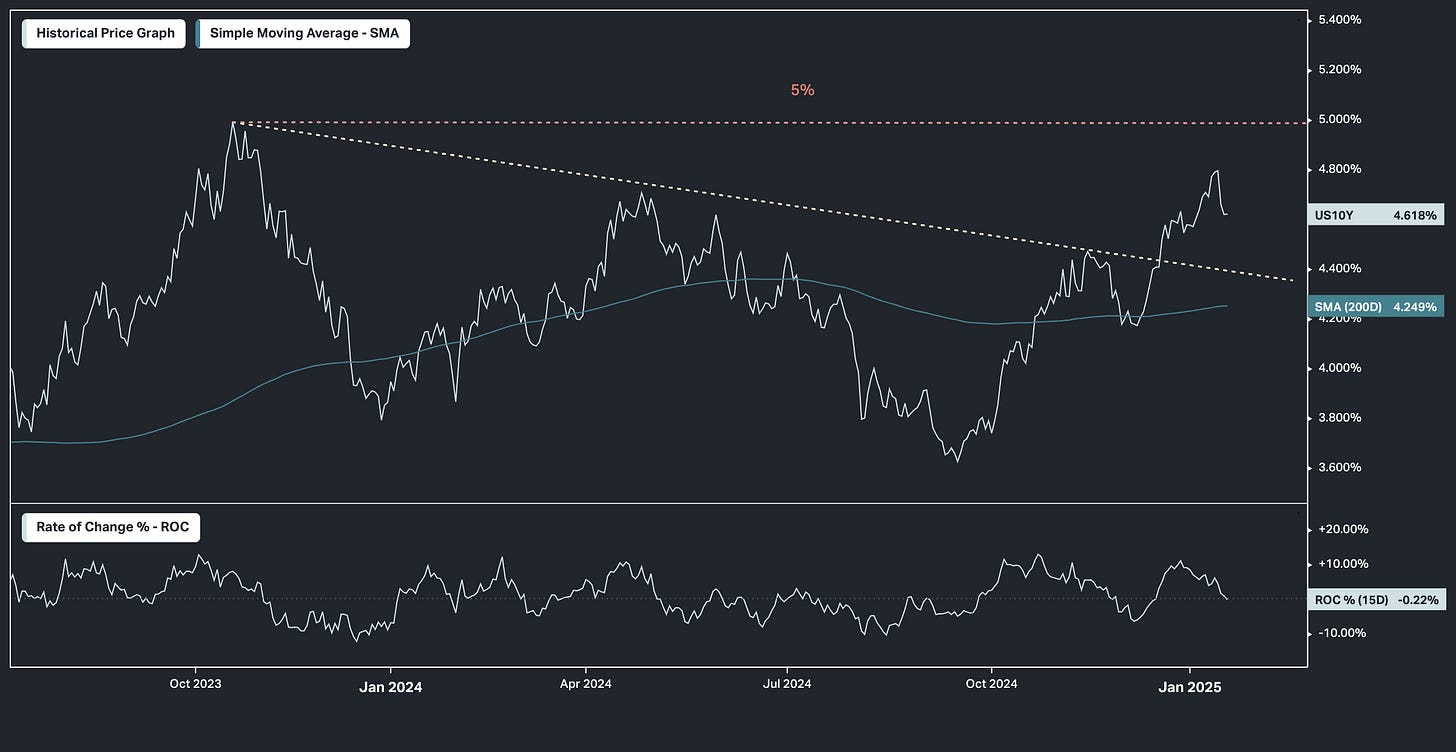US Stocks traded lower in the afternoon session, as big tech shares retreated.
The S&P 500 was down 0.1% on track to snap a three-day winning streak, the tech-heavy Nasdaq shed 0.5%, and the Dow Jones fell nearly 100 points, or 0.2%.
This comes after solid performances from JPMorgan Chase and Goldman Sachs earlier in the week.
While Wall Street saw its strongest session since November on Wednesday, fuelled by positive inflation data and bank earnings, the rally lost steam Thursday.
The 10-year US Treasury yield pulled back, and dovish comments from Federal Reserve Governor Christopher Waller suggested potential rate cuts if inflation data remains favourable.
We heard from Scott Bessent, the next Treasury Secretary, and right up front, in his opening remarks of his Senate confirmation hearing, Bessent addressed the dollar.
He said, "Critically, we must ensure that the dollar remains the world's reserve currency."
And with that, he rejected the need for a central bank digital currency.
He called on Congress to make the Trump tax cuts permanent, and to communicate it to markets, which he thinks would unleash animal spirits and "a new golden age" for the economy.
How did markets react to the incoming Treasury Secretary's three-hour-long Senate hearing? Surprisingly, minimally.
That's because Bessent was upstaged by some dovish Fed comments that hit the wires in the half hour prior to the start of the confirmation hearing.
A couple of Fed officials over the past two weeks have attempted to temper market perceptions that inflation pressures are building again, perceptions largely driven by views on the Trump agenda.
Just a few days ago the market was pricing in just one quarter point rate cut for 2025, while the most recent Fed Summary of Economic Projections (from the December meeting) was looking for two quarter point cuts this year.
How worried is the Fed about the market's misaligned view?
Well, they (the Fed) marched Fed Governor Waller out in front of a camera on CNBC to tell us that "three or four cuts could be possible this year," if the data cooperates. And that he "could certainly see rate cuts happening sooner than the markets are pricing in."
This is likely a response to this chart …








it certainly feels like he is talking his book rather than analyzing the data.